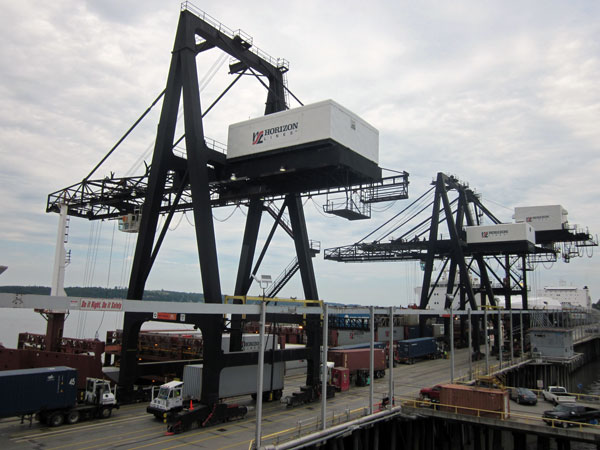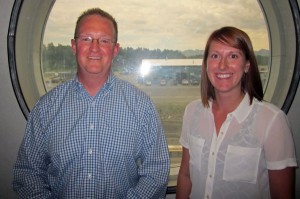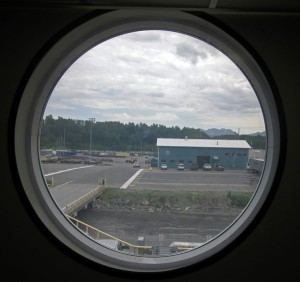
The Port of Anchorage is the point of entry for 90 percent of all the consumer goods for the state of Alaska.

It’s been in the news a lot over the past few years – mostly because of problems with an expansion project, but you may not have heard as much about the parts of the expansion that worked, and how they are changing the port.
Tucked away across a bridge and below the Anchorage neighborhood of Government Hill is one of the most important pieces of infrastructure in the state of Alaska.
Brit Szymoniak is a spokesperson for the Port of Anchorage. She also gives tours, which are only offered in the summer.
Today, she’s showing me around Anchorage’s industrial waterfront. We drive past checkpoints, and follow roadways weaving through dusty lots full of metal buildings and shipping containers. It’s not pretty, but it is profitable. The port is owned and operated by the municipality. According to officials, it pulls in around $4 million a year after expenses.
“Basically, any consumer good that you use come through the Port of Anchorage, so we like to say if you eat wear it or drive it, it probably came through the port,” Szymoniak said.
The Port of Anchorage started doing tours several years ago to educate the public about its importance, and to build support for an expansion.

A big part of that expansion didn’t go well because of construction problems with metal pilings that were being used to build a new dock. Attorneys are working out who’s to blame while the city is looking for a new way forward. But Szymoniak says, because of what happened people often don’t hear about the parts of the Port project that did get done. The tours highlight them. Utilities were buried to make expansion safer. A sixth barge birth was added and there’s now a place for a train to come in and pick stuff up.
“We have added two miles of rail spur, and so that extends you know along the back end of the port. And so then we could then bring rail line all the way down to one of our terminals if the need were to arise. We also have a new road and a road that provides direct access to JBER. And we’ve added about 60 acres of land to the expansion project,” Szymoniak said.
That new land is important, Szymoniak says, because 40 percent of the Port’s revenue comes from leases. The rest comes from fees collected from ships that park at the dock and money charged for the stuff that they unload.
The Port of Anchorage is open 24/7 and 365 days a year. But if you want to take a tour, there are just two chances left this summer: July 14 and on Aug. 11. Tours are conducted every half hour from 11 a.m. to 3 p.m. from the Alaska Railroad headquarters building.
Daysha Eaton is a contributor with the Alaska Public Radio Network.
Daysha Eaton holds a B.A. from Evergreen State College, and a M.A. from the University of Southern California. Daysha got her start in radio at Seattle public radio stations, KPLU and KUOW. Before coming to KBBI, she was the News Director at KYUK in Bethel. She has also worked as the Southcentral Reporter for KSKA in Anchorage.
Daysha's work has appeared on NPR's "Morning Edition" and "All Things Considered", PRI's "The World" and "National Native News". She's happy to take assignments, and to get news tips, which are best sent via email.
Daysha became a journalist because she believes in the power of storytelling. Stories connect us and they help us make sense of our world. They shed light on injustice and they comfort us in troubled times. She got into public broadcasting because it seems to fulfill the intention of the 4th Estate and to most effectively apply the freedom of the press granted to us through the Constitution. She feels that public radio has a special way of moving people emotionally through sound, taking them to remote places, introducing them to people they would not otherwise meet and compelling them to think about issues they might ordinarily overlook.




